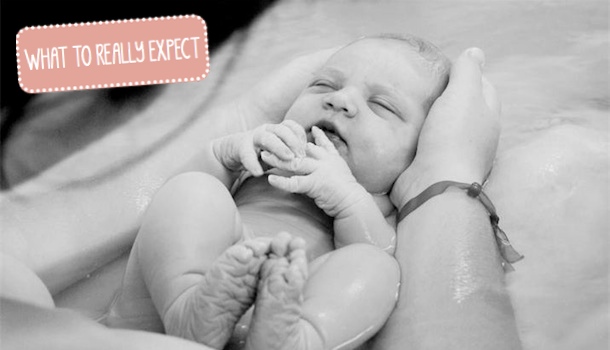
If there is one area where old wives’ tales abound, it’s on the matter of childbirth! Hulda Thorey, Head Midwife, Founder (and Chief myth-buster) at Annerley gives us some truths about what to really expect come D-day.
Myth 1: The most painful part of labour is when the baby’s head comes out
Truth: This might look like the most painful part – and it might be one reason that some doctors rush to give an episiotomy, as they struggle to trust that a woman’s body was built to give birth – but most women find this the least painful part of the process, as the perineum is stretched and numb so pain is greatly reduced. In addition, because you are at the end of the birth journey, the emotion of relief and excitement can also help dull any pain.
A useful midwife’s trick of the trade is to apply a warm compress to the area to further ease pain at this stage.
Myth 2: The bigger the baby, the more difficult the birth
Truth: It’s true that if the baby is really large then the birth can be harder. But birth can also be more difficult if the baby is undersized, as there is more space for it to adopt awkward positions as it passes through the birth canal. A regularly sized baby (below 4.5kg) is more likely to pass through the birth canal in the only easy position available to it, resulting in a more straightforward birth.
Myth 3: If the baby is in occiput posterior position (bottom up but facing forward – also known as ‘sunny side up!’) then the birth will be difficult
Truth: If you’re in early labour, this myth is wrong again. Most babies are in the OP position at some point – certainly before labour begins – but as soon as contractions start to push the baby down the birth canal, the baby is “forced” by both the contractions, and the shape of the birth canal, to shift into the more natural and easier position for birth. In the case of a baby that doesn’t turn, then it is very important for the mother to be mobile during labour as lying on your back is typically the worst position for this type of delivery.
Myth 4: It’s best to have an episiotomy to prevent a tear
Truth: It depends what you consider ‘best’. By definition, an episiotomy will always result in a 2-3cm cut, yet only around 30% of women having their first baby will tear beyond one degree, reducing to only around 10% of women having their second baby. In most cases the tear is a quite small – certainly less than a 2-3cm cut – but on a rare occasion it can be more severe. The skill of your midwife or doctor may have an impact on whether you tear or not, as they should guide you when to push versus when to pant and hold, reducing the likelihood of a tear. Other factors include the speed of the birth, whether the baby is in OP position (see above), or whether forceps or a ventouse are required.
Myth 5: To prevent tears, the doctor or midwife must be able to clearly see the perineum
Truth: False. There’s no need for us to keep the perineum in clear view the whole time. Your doctor or midwife may need to take a peek or feel the area every now and again, but that should suffice.
Myth 6: You should take a laxative or have an enema before labour to avoid moving your bowels during labour (embarrassing!)
Truth: We only recommend an enema if you are being induced, or if you are very constipated. Most women will naturally have a bowel movement in early labour anyway.
The good news is that you probably won’t realise if there has been an unexpected bowel movement, and it will be quickly cleaned away – we do have more important things to think about! You should definitely not stop bearing down because you are afraid that you will have a bowel movement. And don’t be afraid to ask if you need to go to the toilet… we’ve seen it all before!
Myth 7: You cannot eat and drink during labour in case you need a C-section
Truth: This might be something your mother told you, as there used to be a concern that you might regurgitate and choke on a small amount of food if you were under general anaesthetic during a C-section. Today, emergency C-sections are typically performed using an epidural or spinal injection as anaesthetic, but even if you do need a general anaesthetic, the risks are much better managed nowadays.
In fact, because labour is such physical work, you absolutely need to keep hydrated. Eating slow-release carbohydrates such as bananas, pasta and cereals will keep your energy levels up for the duration of your labour and delivery. There are some who even argue that fewer emergency C-sections would be required if women were allowed to eat and drink to keep energy levels up so they were better able to work through labour. So pack snacks!
Main image sourced from Leigh Root via Pinterest
Hulda Thorey is a registered Midwife, Director and Founder of Annerley – and the new Honorary Consul for Iceland! She specializes is continuous midwifery care during pregnancy, although most of her day is spent doing antenatal clinics and consultations for parents to prepare for birth and the baby. She runs pregnancy classes, cares for women in labour at home, and does lactation counseling and home visits after the birth. She works within both the private and public healthcare systems in Hong Kong and is a guest lecturer at the Hong Kong School of Midwifery in the Prince of Wales Hospital. Hulda is the mother of 4 children, 2 of which were born in Hong Kong.
 View All
View All











 View All
View All





 View All
View All


 View All
View All














